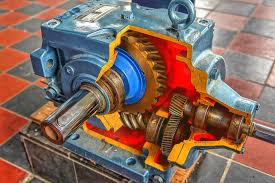Mobile:+86-311-808-126-83
Email:info@ydcastings.com
turbocharger housing
Understanding Turbocharger Housing An Essential Component in Automotive Performance
The world of automotive engineering thrives on innovation and performance enhancement, with one of the most significant developments being the turbocharger. Among the multitude of components that comprise this ingenious device, the turbocharger housing plays a critical role. This article delves into the functionality, types, and advancements in turbocharger housings, elucidating why they are indispensable for high-performing engines.
What is Turbocharger Housing?
The turbocharger housing encompasses the outer structure of the turbocharger, housing the various internal components essential for its operation. The turbocharger itself consists of a turbine and a compressor. The housing is responsible for shaping the flow of exhaust gases that spin the turbine, which in turn compresses air entering the engine. Essentially, the turbocharger housing acts as the interface between the exhaust system and the air intake, facilitating the efficient conversion of exhaust gas energy into increased engine power.
Types of Turbocharger Housings
Turbocharger housings can vary significantly based on design, materials, and intended use. The most common types include
1. Cast Iron Housings Traditionally, turbocharger housings were made from cast iron, valued for its durability and ability to withstand high temperatures. However, its weight can be a drawback in performance-oriented applications.
2. Aluminum Housings With advancements in technology, aluminum has emerged as a popular choice for turbocharger housing. Aluminum is lighter than cast iron and can be designed with more intricate shapes, improving airflow dynamics. Its ability to dissipate heat better than cast iron also helps in maintaining optimal operating temperatures.
3. Stainless Steel Housings Another option is stainless steel, known for its resistance to corrosion and high temperatures. Stainless steel housings are often found in high-performance applications due to their durability and strength.
4. Integrated Housings Modern turbocharger designs often feature integrated housings that merge the turbine and compressor sections into a single component. This integration not only simplifies manufacturing but also optimizes performance by reducing the distance between components, thereby minimizing pressure losses.
The Functionality of Turbocharger Housing
The primary function of turbocharger housing is to channel exhaust gases to the turbine, which spins to create the necessary boost for the intake air. The design and size of the housing significantly impact turbo response and overall engine efficiency.
turbocharger housing

Key aspects of housing functionality include
- Exhaust Flow Management The housing is designed to optimize the path of exhaust gases, guiding them efficiently onto the turbine blades. This flow management is vital for achieving quick spool times, which allow the turbocharger to deliver power more promptly.
- Heat Dissipation Turbochargers generate a lot of heat, especially during performance applications. An effective housing design must facilitate heat dissipation to prevent overheating and ensure the turbo operates within safe temperature ranges.
- Pressure Regulation Proper housing design ensures that the pressure of the exhaust gases is effectively managed. High pressure helps achieve a faster turbine spin which translates to improved power output.
Advancements in Turbocharger Housing Technology
As automotive technology continues to evolve, so do the designs and materials used in turbocharger housings. Some noteworthy advancements include
- 3D Printing The advent of 3D printing technology allows for more complex housing designs that can be tailored for specific performance criteria. This could lead to improved aerodynamics and efficiency due to the ability to design structures that traditional manufacturing methods cannot achieve.
- Coating Technologies The application of thermal barrier coatings helps to enhance the performance and longevity of the housing, allowing it to withstand higher temperatures and associated stress.
- Variable Geometry Turbochargers Some modern turbochargers feature variable geometry housing, allowing for adjustable turbine geometry. This innovation optimizes performance at various RPMs, providing both low-end torque and high-end power.
Conclusion
Turbocharger housing is a pivotal component that plays a vital role in enhancing engine performance. From managing exhaust flow to facilitating heat dissipation, its design directly impacts the efficiency and responsiveness of the turbocharger as a whole. With continued advancements in materials and manufacturing techniques, the future of turbocharger housing looks promising, paving the way for even more powerful and efficient engines. As the automotive industry strives for greater performance and sustainability, the evolution of turbocharger housing remains a clear indicator of the innovative spirit driving this field forward.
-
Why Should You Invest in Superior Pump Castings for Your Equipment?NewsJun.09,2025
-
Unlock Performance Potential with Stainless Impellers and Aluminum End CapsNewsJun.09,2025
-
Revolutionize Your Machinery with Superior Cast Iron and Aluminum ComponentsNewsJun.09,2025
-
Revolutionize Fluid Dynamics with Premium Pump ComponentsNewsJun.09,2025
-
Optimizing Industrial Systems with Essential Valve ComponentsNewsJun.09,2025
-
Elevate Grid Efficiency with High-Precision Power CastingsNewsJun.09,2025











